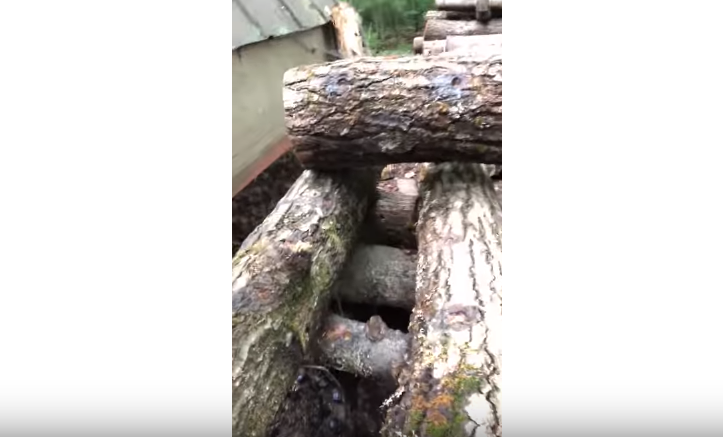Discover three methods we use for growing shiitake mushrooms outdoors in this article, and learn what you need to grow shiitakes all year long
It’s mid August and I wanted to share some methods for growing shiitake mushrooms outside. In the video below I showcase the Fungi Ally laying yard, where we have sawdust production blocks, lots of logs, and soak tanks.
Overall, we are growing shiitake mushrooms in three different ways outside. In the video I slowly walk you through each method.
https://www.youtube.com/watch?v=Q_SPLLWv6XA
First, we have the sawdust blocks. You can see the mushrooms beginning to pin on the sawdust blocks, which are a mixture of sawdust and wheat bran. We produce these in our sterile lab, and these blocks are going through their second flush. We begin these blocks indoors where we let them rest between 10-14 days during the first flush.
One thing about shiitakes is that they can get moldy during the second flush if they are not handled properly. The shiitakes prefer to be outside for the second flush because of the added wind flow, and the log’s ability to dry out a bit easier.
We are primarily fruiting these shiitake logs outside. There is no barrier. We spray them down once a day to keep them moist and humidity up. This summer, because of all the rain, the humidity has remained high enough, which allowed the blocks to start pinning again.
On average we’re getting a second flush outdoors of about half a pound of shiitakes. This is a passive way of producing mushrooms from blocks outside.
If you are lucky enough to live near a mushroom farm, often times they will sell these spent blocks at a low cost, like $1, so you could passively produce your own shiitakes at home.
Growing shiitake mushrooms on logs
The second method of shiitake cultivation I display in the video is log cultivation. We have logs in incubation where they are stacked alternately on the ground.
On these logs you can see the mycelium growing from the ends. As you can see in the video, the inoculation hole is in line with this mycelium growing from the end of the log. These specific logs we inoculated in late winter so they would be producing for us later in the year.
We soak these shiitake logs in our soak tubs to fruit them. We use 300 gallon stock tanks and soak the logs for 24 hours. Then we bring the logs over to the fence for drying. We stand them up so we can access all of the fruiting mushrooms. Once we have harvested the shiitakes and the flush is complete, we return the logs back to the crib stack.
Want to grow mushrooms at home? Check out all of our spawn options here.
Growing shiitake mushrooms on totems
Totems provide a fun and simple way of growing shiitakes. What you do is take a one-foot section of a log and put spawn at the bottom. Then you take another one-foot log section, put spawn between the two, and attached them with some nails. At the top you put another lawyer of spawn and a two-inch disk of wood to cap off the totem. Be sure to also secure that piece with nails as well.
During incubation, after the first two months, we keep a paper bag over the top s the mycelium has a chance to grow over the logs. We allow the totems to stay in place and rest; we do not shock them with water, but they do get wet when it rains naturally.
Totem growing is the quickest method to try outside. You don’t have to drill as many holes or close them up as you would with the log cultivation.
Growing shiitake mushrooms indoors, too!
In the video we mentioned mushroom growing kits, which you can use in your home to grow a variety of edible mushrooms. You can start growing shiitake mushrooms with the help of a shiitake mushroom growing kit, as well as blue, pink, and yellow oyster kits. We even have lion’s mane and chestnut mushroom kits. Check out all of our variety of mushroom growing kits now so you can start growing inside whenever you like.
And if you're wondering about the benefits of using a shiitake mushroom growing kit at home, consider this: You will have the freshest mushrooms around!
You also get the opportunity to watch as the mushrooms grow. Growing shiitake mushrooms is a wonderful way to develop a relationship with the food you put in your body.
Furthermore, shiitake mushrooms are very healthful. These mushrooms are a great source of vitamin D, especially after you expose them to the sun.
According to NutrionalValue.org, 100 grams of raw shiitakes has the following nutritional benefits (DV is the abbreviation for the suggested daily value intake):
- 24% DV of Niacin
- 15% DV of Pantothenic acid
- 15% DV of Vitamin B6
- 13% DV of Riboflavin
- 13% DV of Threonine
- 12% DV of Manganese, Mn
- 11% DV of Phosphorus, P
- 10% DV of Fiber
And those are just a sampling of the vitamins, minerals, proteins and amino acids found in shiitake mushrooms. Check out the page at NutritionalValue.org for more info.

